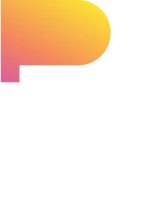A strong brand promise is a long-term commitment that you offer your audience. It’s not just a catchy slogan but an assured pledge that encapsulates your brand’s identity, values, and what it stands for in the minds of your customers. Let’s explore how to create a brand promise that not only sticks but also sustains through strategic insights and concrete examples.
Understanding your brand’s core values
All distinctive and memorable brands offer the best brand promises rooted in core values that permeate their entire business. These values guide decisions and directly influence customer satisfaction and delight. Whether focusing on company culture, innovation, or customer service, these core values underscore your brand commitment, ensuring authenticity and setting you apart. Key questions to anchor these values include—what does your brand stand for and what it will never compromise on?
Analyzing the competitive landscape
To shape a unique brand promise, start by scrutinizing the existing landscape. Study brand promise examples in your industry to spot where they excel and where they don’t. This is crucial for maintaining brand integrity in what you say and also to ensure your brand doesn’t merely echo others. Identifying overlaps and finding gaps helps you carve out a niche that’s distinctly yours, making your brand promise stand out in the market.
Crafting your brand promise
The brand promise you work on should encapsulate your brand’s uniqueness. It should be clear, compelling, and reflective of what makes your brand different. A well-conceived brand promise acts as a bold declaration of what customers can expect from every interaction with your brand. Beyond meeting expectations, it should establish credibility in ways that are meaningful and valuable to your customers.
Communicating your brand promise
Once crafted, the next step is how to target your brand promise effectively. This is where brand messaging comes into play. Every piece of communication, from your website copy to your ad campaigns, should consistently echo your brand promise. It’s what you say and how you say it that reinforces what your brand stands for.
Use stories, testimonials, and visual elements that align with your promise statement. These elements should articulate not just the functional benefits but also the emotional resonance of your brand promise.
Delivering on your brand promise
The success of your brand promise comes down to living up to your promise statement—it’s where many brands stumble. Every customer interaction is a chance to prove that your values aren’t just words. Consistency is non-negotiable. Everyone in your organization needs to be cognizant of how their role turns that promise from a line into a lifeline of your brand’s daily operations.
Evaluating and evolving your brand promise
Brand communication is a two-way street. Regular feedback from your customers and evaluation of how your brand promise is perceived can provide valuable insights into areas for improvement. Revisiting and evolving your brand promise ensures that it remains pertinent, especially as market dynamics and consumer expectations change. This iterative process helps in staying true to your core values while also being adaptable and responsive to new insights and opportunities.
Here are 10 stellar examples of powerful brand promises that have captivated audiences globally:
Amazon: To be Earth’s most customer-centric company.
Amazon is all about putting customer needs first, striving to understand and meet them better than anyone else.
Apple: Think different.
Apple is dedicated to pushing the boundaries of technology with creativity and innovation, inspiring users to explore new possibilities.
FedEx: When it absolutely, positively has to be there overnight.
FedEx guarantees speed and reliability in delivery services.
Nike: To bring inspiration and innovation to every athlete in the world.
Nike is all about empowering everyone through sport, embracing the idea that if you have a body, you’re an athlete.
Starbucks: To inspire and nurture the human spirit – one person, one cup and one neighborhood at a time.
Starbucks extends beyond coffee to offer a community experience.
BMW: The Ultimate Driving Machine.
BMW assures an exceptional driving experience, emphasizing luxury and performance.
Coca-Cola: To refresh the world in mind, body, and spirit.
Coca-Cola offers more than a beverage; it’s an invitation to enjoy and share moments of happiness.
Disney: To make people happy.
Disney’s straightforward promise is to deliver joy and entertainment across all its services.
Southwest Airlines: Dedication to the highest quality of customer service delivered with a sense of warmth, friendliness, individual pride, and company spirit.
Southwest emphasizes a distinctive, caring service approach.
IKEA: To create a better everyday life for the many people.
IKEA focuses on providing affordable, well-designed furniture that enhances everyday living.
Each of these brand promises is more than just what these companies do; they reveal why they do it and the impact they aim to have on their target audience. Beyond being excellent marketing statements, they offer an opportunity to reinforce what they truly believe they can achieve for each and every one of their customers.
FAQs
How does a brand promise differ from a tagline or slogan?
A tagline or slogan is a catchy phrase designed for marketing, but a brand promise is a deeper commitment. It’s about consistently delivering specific values and benefits.
Can a brand have multiple promises, or should it focus on one?
Keeping one clear and compelling brand promise helps keep your message crisp and consistent. Trying to juggle multiple promises can water down your impact and confuse customers about what your brand really stands for.
How often should a brand reevaluate its promise?
A brand should check in on its promise every one to three years, or whenever big changes happen in the market or their own strategy. This keeps the promise fresh and in line with what the company and its customers need.
What are common pitfalls in creating and delivering a brand promise?
Common pitfalls like overpromising, inconsistent experiences, and promises that don’t match reality can really hurt a brand’s credibility and trust with its audience.




